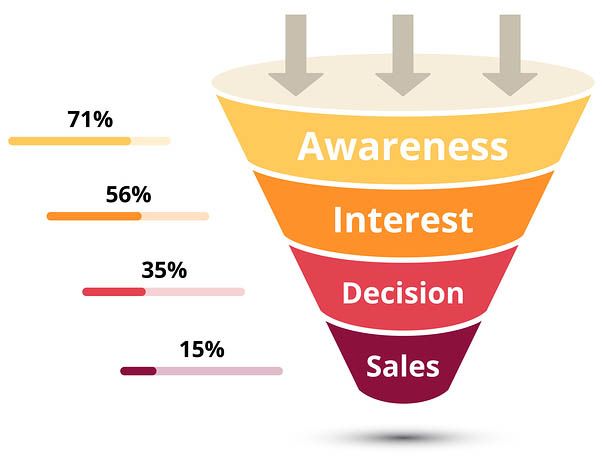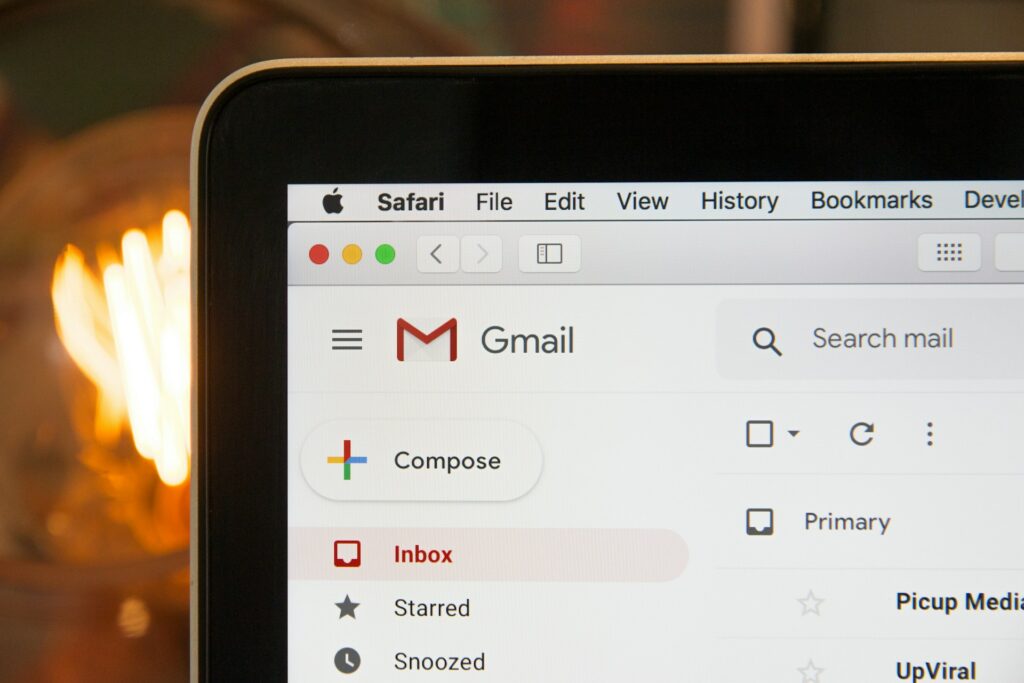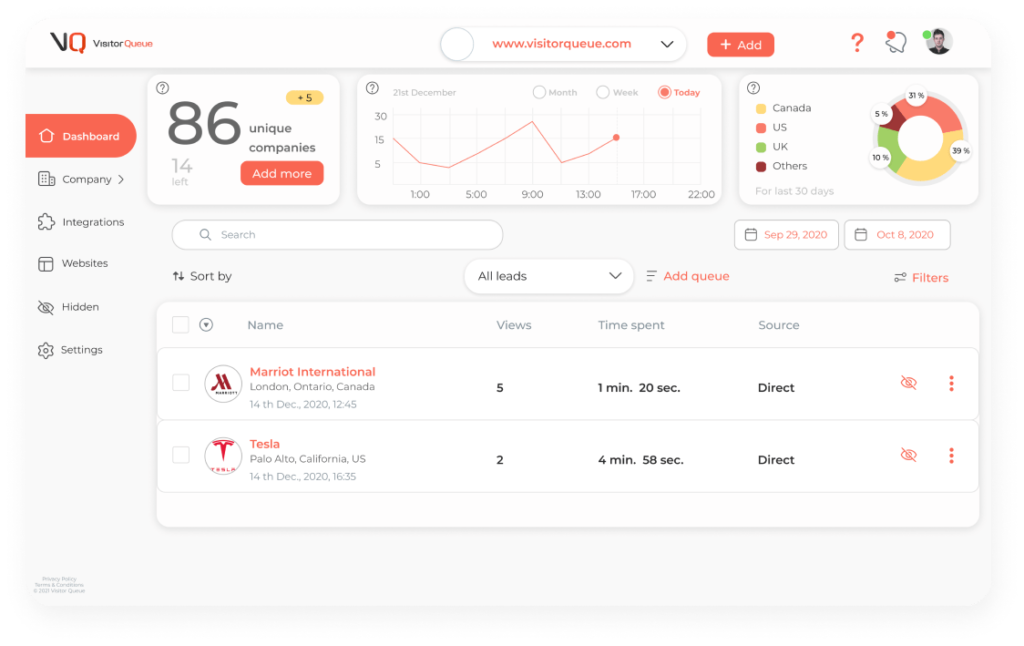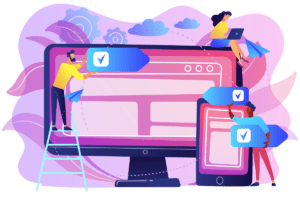As a small business, it can be difficult to properly develop a marketing plan without a large marketing team and budget. However, in order to grow your business, you’ll need to make the right decisions and get your business in front of a wider audience. With the right strategies in place, your small business can compete, attract leads, and boost your ROI. In this article, we go through how to develop a B2B digital marketing plan for small businesses to succeed.
Define Your Goals and Objectives
The first step in developing a digital marketing plan for small businesses is to clearly define your goals and objectives. Are you looking to increase brand awareness, generate leads, or drive conversions? By establishing clear and measurable goals, you can tailor your strategies accordingly. For example, if you are looking to generate leads, you’ll want to set out how many leads you want to generate, the average cost it takes to generate each new lead, and what you are going to do with them after you collect their contact information.
Know Your Target Audience
Understanding your target audience is important to any marketing strategy, regardless of the size of your business. Identify the demographics, firmographics, pain points, and preferences of your ideal customer. This will enable you to create targeted content and messaging that resonates with your audience and drives engagement.
Understand Your Sales Funnel
Before diving into the specifics of developing a B2B digital marketing plan for small businesses, it’s important to understand your sales funnel. Your sales funnel has multiple stages that go from lead generation to the point of conversion. Here are the key stages that you’ll need to understand:

1. Awareness
At this stage, prospects become aware of your brand and what you have to offer. They may come across your business through various channels including social media, organic search, or referrals.
2. Interest
Once prospects are aware of your brand, they express interest by engaging with your content, visiting your website, or subscribing to your newsletter. This stage is crucial for nurturing leads and guiding them further down the funnel.
3. Decision
At the decision stage, prospects are ready to make a purchase decision. This is the moment where you showcase the unique value proposition of your product. And, address any concerns prospects may have. This is where bottom-of-the-funnel content, like case studies, can come in handy.
4. Retention
Once a prospect becomes a customer, the focus shifts to retention and nurturing a long-term relationship. Providing a good onboarding experience, customer service, support, and personalized communication can help improve loyalty and encourage repeat business.
Conduct a Competitor Analysis
You should know what your competitors are up to at all times. A thorough competitor analysis can provide valuable insights into market trends, industry benchmarks, and gaps in the market. Identify your main competitors, and analyze their digital marketing including their website, social media channels, SEO strategies, paid advertising, and gated content. By doing this, you can differentiate yourself, identify opportunities for growth, and stand out from the crowd.
Choose the Right Channels
With so many channels available for your business, it’s essential to focus on those that align with your goals and target audience. Whether it’s SEO, social media, email marketing, content marketing, or paid advertising, selecting the right mix of channels will maximize your reach and engagement. With so many options available, this is why it’s so crucial to understand your audience’s needs and preferences. Here are a few of the best channels that B2B companies can focus on:

LinkedIn is one of the best and most effective social media platforms for B2B companies specifically. It allows businesses to connect with industry professionals, share thoughtful content, participate in discussions, and showcase your company with your content. Posting content on LinkedIn is a great option for small businesses since organic content is free. Although LinkedIn offers paid campaigns, because of the highly specific audience you can target, the price of running ads can be very expensive.
Email Campaigns
Email marketing is one of the most cost-effective and effective marketing channels. Your business can use email campaigns to nurture leads automatically, promote new products or services, and maintain ongoing relationships with your customers. Keep in mind that personalized and segmented email campaigns tend to yield higher engagement and conversion rates.

Referral Marketing
With referral marketing, encourage your happy customers to refer their peers to use your product or service. Offer an incentive to your current customers to entice them to refer their friends. So, it’s a win-win for the both of you. You can offer recurring revenue from the new client’s subscription, an Amazon gift card, or a discount on their current subscription. There are a ton of great referral program software out there that can help you manage your referrals. This way it doesn’t get too complicated to manage internally.
Webinars and Online Events
Hosting webinars, educational sessions, and online events can allow your business to educate your target audience. And, engage with leads in real time. This kind of interactive content can give you the opportunity to answer questions, demonstrate your product, network, and build credibility. And, it’s free to generate sign-ups via email and organic social media.
Create Enticing Content
We hear the saying, “Content is King”, all of the time as marketers. Creating high-quality and valuable content is essential for attracting and enticing your target audience. Whether it’s blog articles, whitepapers, case studies, or video content, it’s important to focus on creating content that is informative. For example, if you create a whitepaper that you are gating, you’ll want to ensure the content is not easily found by a quick Google search.
Optimize Your Website
Most forms of marketing lead back to your website to convert or learn more. This is why it’s crucial for your website to be optimized. Ensure your website is fast, loads quickly, flows smoothly, and has a call to action on each page. Additionally, ensure that your website is optimized for search engines. You can do this with meta descriptions, keywords, and ALT text to ensure it is easy to find.
Identify Your Website Visitors
While Google Analytics can help you see what your visitors are doing on your website, you still have no clue who is visiting your site. With the help of Visitor Queue, you can see what companies are on your website, how they got there, what pages they viewed, and how much time they spent on each page. You also receive a description of each company, their industry, employee count, location, and more firmographic information to help you qualify them as a lead. In addition, you can see employee contact information for each company to help you reach out and see if they found what they were looking for. With the help of Visitor Queue, you can see if your marketing efforts are attracting the right audience and generating leads. Try Visitor Queue for free today.

Measure, Measure, Measure
As a small business, it can be easy to get caught up in new strategies instead of properly reviewing what you are currently doing. Tracking and analyzing the performance of your digital marketing campaigns is essential for identifying areas of improvement. And, maximizing your ROI. Utilize analytics tools like Google Analytics, Visitor Queue, and Hotjar to monitor your website traffic, conversion rates, and how your visitors behave on your website.
Final Words
Developing a successful B2B digital marketing plan for small businesses is not easy. By understanding your sales funnel, knowing your target audience, and leveraging the right marketing channels, you can encourage your leads to convert into paying customers. While it can take some trial and error to figure out what works for your small business, tracking your metrics can help you come to this conclusion faster. As always, if you have any questions about using Visitor Queue to identify your website visitors, do not hesitate to reach out.
 Identify
Identify Personalize
Personalize Benchmark
Benchmark Agencies
Agencies Integrations
Integrations Case Studies
Case Studies Use Cases
Use Cases Blog
Blog Resources
Resources









